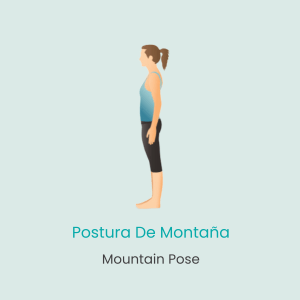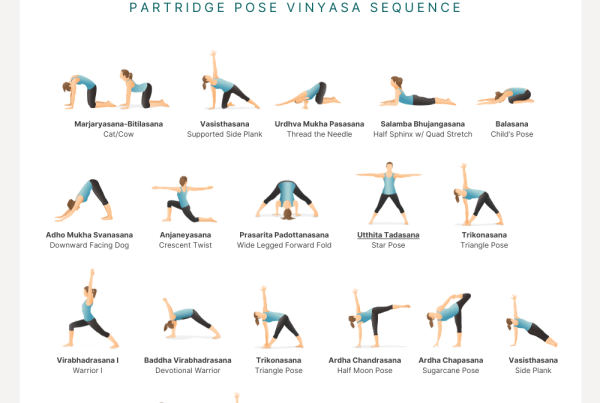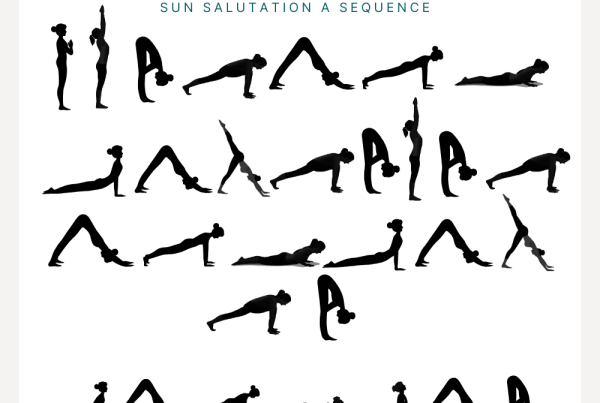
This week, we’re celebrating Cinco de Mayo by hosting a bilingual yoga class. Today, we will explore poses in their Spanish name and then translate it to the English and root in Sanskrit. This is an easy beginners guide toward teaching a few poses in Spanish to help your yoga students learn the pronunciation.
We published another article with tips on how to teach a bilingual yoga class, so this will be a layout of an actual class to act as an example of that. Be sure to subscribe to our weekly newsletter for more yoga class outlines, themes, and helpful, downloadable information to help construct fun and effective yoga classes for all!
Let’s get to it…

Postura De Montaña (Mountain Pose)
This is one of the most common poses in a yoga class. Mountain pose may look relatively easy but there is a lot going on. In tadasana, you must ground down through all four corners of each foot, spread through the collar bones to lift the chest and focus your drishti straight ahead.

Guerrero 1 (Warrior 1)
Warrior 1 is a powerful pose that helps to energize through chest while pulling your arms up overhead to strengthen the shoulders. The front knee stays bent and back foot should aim to be planted on the mat.

Guerrero 2 (Warrior 2)
Warrior 2 is arguably the most-used standing yoga pose (at least in a vinyasa style yoga class) as it exemplifies strength, power and vigor in a yoga practice.

Guerrero 3 (Warrior 3)
Warrior 3 helps us to find balance and steadiness. Warrior 3 is a great pose to use in a balance and twist section of class to get students realigned with their body and breath.

Postura Perro Boca Abajo (Downward Facing Dog)
Downward dog is the pose that prepares students to get moving. The back of the legs open and students become comfortable with elongated the spine while pressing through their hands and feet.

Ángulo Lateral Extendido (Extended Side Angle)
At YogaRenew, we suggest that every class include triangle pose and extended side angle because they are open hip, standing poses that properly warm up the body for every other pose throughout class.

Triángulo Extendido (Triangle Pose)
Same goes for triangle pose – this open hip, standing pose is great for activating all of the core elements used throughout the rest of class.

Postura De Media Luna (Half Moon Pose)
Half moon pose is both an open hip pose and a balancing pose. Although you may use a block or reach your hand to the ground, it gets students comfortable with being on one foot.

Postura Del Niño (Child’s Pose)
A place to re-center, re-focus on the breath and allow for active resting.






